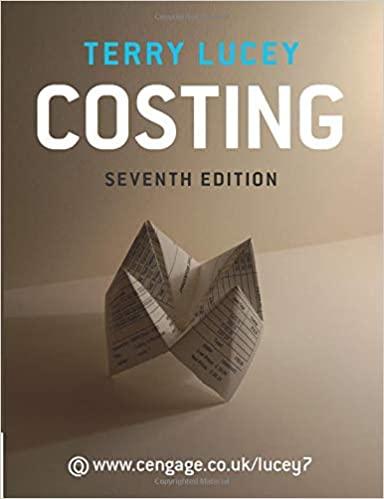







Assume for each of the following independent cases that the annual accounting period ends on December 31 and that the total of all revenue accounts was $158,000 and the total of all expense accounts was $134,000. Case A: Case DI Assume that the business is a sole proprietorship owned by Proprietor 1. Prior to the closing entries, the capital account reflected a credit balance of $58,000 and the Drawings account showed a balance of $8,800. Assume that the business is a partnership owned by Partner i and Partner B. Prior to the closing entries, the owners' equity accounts reflected the following balances: A, Capital, $48,000; B, Capital, $46,000; A, Drawings, $5,800; and B, Drawings, $9,800. Profits and losses are divided equally. Assume that the business is a corporation. Prior to the closing entries, the stockholders' equity accounts showed the following: Capital Stock, par $10, authorized 38,000 shares, outstanding 19,000 shares; Additional Paid-In Capital, $5,800; Retained Earnings, $73,000. No dividends were declared. Case C: Required: 1. Prepare all the closing entries required at December 31 for each of the cases. (If no entry is required for a transaction/event, select "No Journal Entry Required" in the first account field.) View transaction list Journal entry worksheet Case A: Record the closing of the drawing account to the proprietor's capital account. 1. Prepare all the closing entries required at December 31 for each of the cases. (If no entry is required for a transaction/event, select "No Journal Entry Required" in the first account field.) View transaction list Journal entry worksheet E > Case B: Record the closing of the revenue and expense accounts to the partners' capital accounts. 1. Prepare all the closing entries required at December 31 for each of the cases. (If no entry is required for a transaction/event, select "No Journal Entry Required" in the first account field.) View transaction list Journal entry worksheet D Case B: Record the closing of the partners' drawing accounts to the partners' capital accounts. 1. Prepare all the closing entries required at December 31 for each of the cases. (If no entry is required for a transaction/event, select "No Journal Entry Required" in the first account field.) View transaction list Journal entry worksheet Case C: Record the closing of the revenue and expense accounts to the retained earnings account. Assume for each of the following independent cases that the annual accounting period ends on December 31 and that the total of all revenue accounts was $158,000 and the total of all expense accounts was $134,000. Case A Case B: Assume that the business is a sole proprietorship owned by Proprietor 1. Prior to the closing entries, the capital account reflected a credit balance of $58,000 and the Drawings account showed a balance of $8,800. Assume that the business is a partnership owned by Partner A and Partner B. Prior to the closing entries, the owners' equity accounts reflected the following balances: A, Capital, $48,000; B, Capital, $46,000; A, Drawings, $5,800; and 3, Drawings, $9,800. Profits and losses are divided equally. Assume that the business is a corporation. Prior to the closing entries, the stockholders' equity accounts showed the following: Capital Stock, par $10 authorized 38,000 shares, outstanding 19,000 shares; Additional Paid-In Capital, $5,800; Retained Earnings, $73,000. No dividends were declared. Case Ci 2. Show how the equity section of the balance sheet would appear at December 31 for each case. Case A: Sole Proprietorship Case B: Partnership Case C: Corporation Complete this question by entering your answers in the tabs below. Case A Case B Case C The equity section of the balance sheet would appear at December 31 for case A. A, Capital, December 31 2. Show how the equity section of the balance sheet would appear at December 31 for each case. Case A: Sole Proprietorship Case B: Partnership Case C: Corporation Complete this question by entering your answers in the tabs below. Case A Case B Case C The equity section of the balance sheet would appear at December 31 for case B. Partners' Equity A, Capital B, Capital Total Partners' Equity 2. Show how the equity section of the balance sheet would appear at December 31 for each case. Case A: Sole Proprietorship Case B: Partnership Case C: Corporation Complete this question by entering your answers in the tabs below. Case A Case B Case C The equity section of the balance sheet would appear at December 31 for case C. Stockholders' Equity Contributed Capital: Capital Stock Additional Paid-In Capital Total Contributed Capital Retained Earings Total Stockholders' Equity














